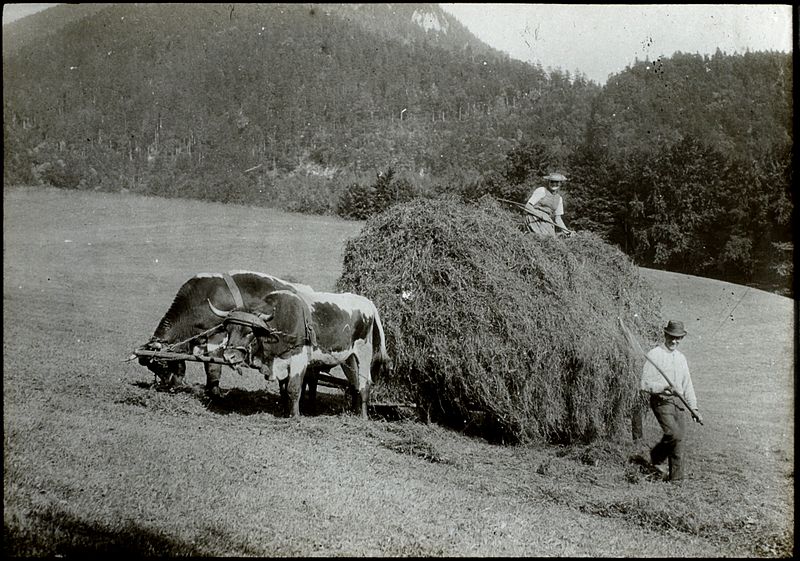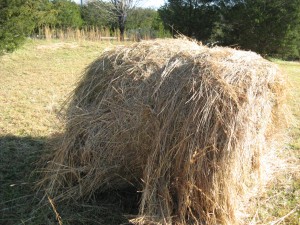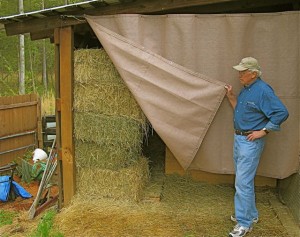-

Early method of preserving forage, Romania image from Wikipedia
History: Early farmers noticed that growing fields produced more fodder in the spring. As the animals did not eat all of the spring and summer grasses the idea of cutting the grass in the summer, drying it, storing it and feeding it in the winter evolved . Originally this was done in Europe in the 1500s with an instrument known as the Scythe which was used by teams of local farmers. The hay was collected on wagons and stored in barns or huge hay stack on raised ground requiring skill in construction. Eventually it would compress. Chunks could be cut off to distribute to animals.
Mechanized hay production did not become common until the 1930s. That was as a result of the invention of the tractor and the baler.

Haying with the advancement of a truck 1930 image from Wikipedia
In the last 700 years the Western civilization has needed to save its forage, and therefore, we have seen improvements in; storage, machinery, science and fertilizers. In other words we have the ability to produce and harvest large quantities of high quality hay, and to preserve its nutrition. Yet problems still persist in saving quality hay as a result in the same age old challenges.
- dampness and sun effect
- rodents and birds
- rot and mold
Feeding less than high quality hay is not cost effective and efforts to protect your hay are possible. The University of Minnesota Extension Service has done extensive studies. Summarizing the highlights of their research follows:
- Make tight bales with a poly twine that do not wick moisture into the bale
- Store bales off the ground and not under trees
- Bale in round bales and covered with net wrap rather than twine.
- Store under cover in hay barns
- Install shade on exposed sides of hay shed to protect against sun, rain and birds
This last protector of hay can be accomplished with the Hay-Shade™. It is an American made product in a reflective sandstone color, reinforced on the edges with nylon tape and grommets on the 4 sided hem. This easy to install product will last for years and is a prudent decision for your farm enterprise and valuable animals.
Copyright Horse Fly Net 2012
Information and pictures from Wikipedia and University of Minnesota.
Hay, a gift of nature
Call Us at (910) 725-2115 or Email Us at info@horseflynet.com
Horse Fly Net
This see-through breathable screen will last for years. It is made of polyester vinyl coated and heat sealed on the edges with brass grommets about every foot. It has no chemicals added. Our HorseFlyNets only cost approximately $2.00 a square foot for smaller sizes and less for larger. Our product is woven and manufactured in the USA.
HorseFlyNet®
Southern Pines, NC
(910) 725-2115
info@horseflynet.com



